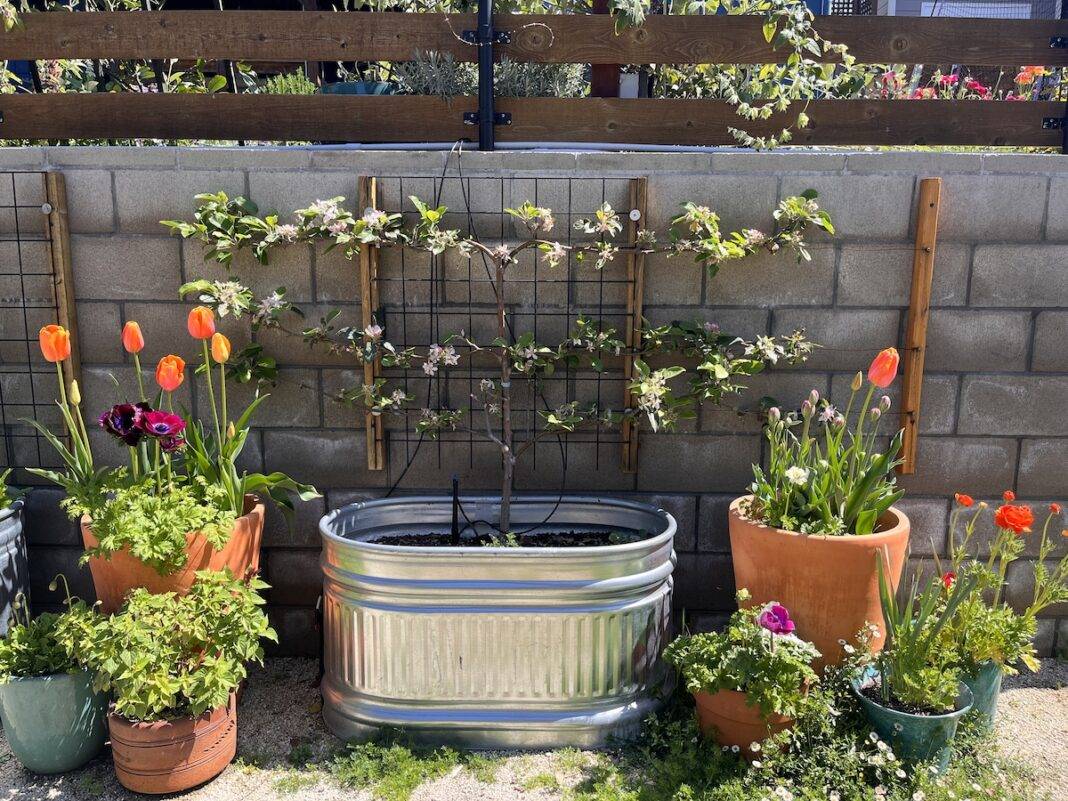The SDG&E Community Tree Rebate Program provides certain residential customers a reimbursable opportunity to purchase and plant a wide variety of trees.
Updated March 26, 2024
Spring is the perfect time to plant a new tree, and San Diego Gas & Electric may pay you to do it. So run, don’t walk, to your local nursery to take advantage of this new program before funds run dry.
The SDG&E Community Tree Rebate Program reimburses residential customers in specific ZIP codes $25 to $50 for buying and planting certain trees. You can plant a native willow in your backyard, put a jacaranda out front, or have a potted fruit tree on your deck. Or do all of them, since up to five will be covered.
Eligible ZIP codes were identified as neighborhoods where a more robust shade canopy would improve air quality and reduce energy usage. Particular trees were chosen to increase native and drought-tolerant plantings, support biodiversity, and avoid impacting overhead power lines.
How does it work?
Control is in your hands, letting you pick out your own plants at your favorite local nursery. The program runs to Oct. 31, 2024, but funding is limited, so rebates may no longer be available if you procrastinate.
1. Verify your eligibility
Make sure your ZIP code is on the list, and if not, check out additional community tree programs SDG&E offers.
2. Make a plan
Review the eligible trees to decide what you want. If you are unsure which would work best in your neighborhood and yard, visit your local nursery for advice. Note: This year’s program does not include native milkweed.
3. Time to shop
Purchase up to five trees in one-, five-, or fifteen-gallon sizes.
4. Save your receipts
You will be applying online, so take a picture before you lose it. (Who saves actual receipts anymore?!)
5. Get gardening
Time to get dirty and plant your new friends either in the ground or a container.
6. Strike a pose
Snap a picture of each new beauty.
7. Submit your application
Upload your receipts and pictures.
8. Get your money!
SDG&E will provide $25 per 1-gallon trees, $35 for 5-gallon ones, and $50 for every 15-gallon tree. It does not matter how much you pay. Yes, you are reading that correctly. If you purchase a one-gallon eligible tree for $15, SDG&E will reimburse you $25! I’m not great at math but am pretty sure that is a good deal.
What makes this program so cool?
- Customers are eligible for five rebates. Any five things from the list! The only limit is two fruit trees per property.
- Since SDG&E will pay $25 to $50 per plant, you may make money on this deal. Or think of any extra money as paying you for your time as you exercise that green thumb.
- Customers do not need a yard. Planting in containers or pots makes this program accessible to more people, including apartment and condo dwellers.
- The program is committed to promoting and incentivizing native plants.


